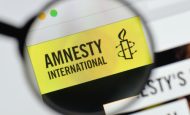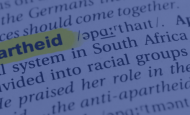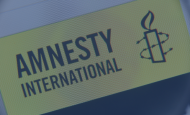Amnesty’s War on Israel Joins Its War on Technology
On May 2, 2023, Amnesty International published “Automated Apartheid,” the latest installment in a multi-year campaign to smear Israel by exploiting that label. Amnesty alleges that Israel’s use of facial recognition technology at security checkpoints and in Hebron and Jerusalem is illegal and “fragments, segregates and controls Palestinians” – claims that were echoed uncritically in a New York Times article on the report. The report also targets companies providing camera equipment to Israel as part of Amnesty’s ongoing BDS agenda.
As with previous Amnesty attacks, this document erases the terrorism and public safety concerns that drive Israeli policy, as well as the ways in which technological advancements allow for less intrusive security measures. Amnesty also ignores the ubiquitousness of facial recognition software in countless settings around the world, treating something that has become commonplace as a unique, particularly egregious form of Israeli wrongdoing.
This is, in many ways, a joint report with an Israeli NGO, Breaking the Silence, presenting “testimonies” that contain the same ideological projection about Israeli motivations. Notably, Breaking the Silence is currently part of a €400,000 grant from the European Union for a project titled “Always Watching: Protecting Human Rights in the Digital Age.” According to the project’s description, it “aims to protect the fundamental rights and freedoms violated by Israeli state actors’ use of digital surveillance. This will be done by creating a public and legal environment protective of Human Rights in the face of current and future risks posed by surveillance technology (ST).”
Erasing terrorism
Amnesty alleges “an ever-growing surveillance network which is entrenching the Israeli government’s control over Palestinians” – pointing to the use of CCTV cameras with facial recognition capabilities in Hebron and Jerusalem. In describing the placement of cameras in Jerusalem, Amnesty opines that “Israeli authorities have targeted sites of cultural and political significance with new surveillance tools, such as the Damascus Gate entrance to the Old City, which has long been a place for Palestinians to meet and hold protests.”
Here, Amnesty ignores the most essential aspect of these areas, the tense and frequently violent security reality. Scores of terrorist attacks perpetrated by Palestinians against Israeli civilians and security personnel in recent years at Damascus Gate, as well as in other areas in and around Jerusalem’s Old City and the H2 area of Hebron. Since 2015, 38 individuals have been killed in scores of attacks in these areas.
Amnesty’s pseudo analysis is also refuted by the use of the same technology in the Jewish Quarter of the Old City, including at the Western Wall (Kotel) plaza (in the map provided by Amnesty, its “detailed tour inside the Old City” was actually quite limited). This reflects the Old City’s status as Israel’s primary tourist attraction (which also makes it a prime target for Palestinian terror) is another key factor in where heightened technological measures are employed.
For this and other reasons, Amnesty’s demand that “The state of Israel should immediately cease the deployment of facial recognition technologies for the identification of Palestinians in the OPT, including at checkpoints” is absurd. Even if there were a Palestinian state and irrespective of Israel’s presence in the West Bank, Palestinians crossing into Israel would be required to identify themselves as they pass through security checks at border crossings. In other words, facial recognition at West Bank crossings – and the way the technology makes security processes more efficient and less onerous – is analogous to their use in transit hubs, ports of entry, and border crossings around the world.
Use of cameras in Israeli cities
Contrary to Amnesty’s allegations about the “inherently discriminatory nature” of Israel’s use of facial recognition, this technology is also widely used in Israel. In the center of the country, facial recognition technology identifies potential security threats.
At the Ashdod port, facial recognition detects suspicious individuals who may be involved in criminal activities, such as smuggling.
Use of cameras by other governments
Despite Amnesty’s “apartheid” framing, other countries utilize facial recognition software to combat terrorism and crime. For instance, a June 2021 report by the US Government Accounting Office (GAO) found that 20 Federal agencies “reported owning systems with facial recognition technology or using systems owned by other entities, such as other federal, state, local, and non-government entities.”
Likewise, facial recognition technology is used for security reasons throughout Europe. Airports in the Netherlands, Spain, France, Germany, and the UK, as well as bus and metro systems in Berlin, Paris, and Madrid use it for security screenings, including border control and identification, and it was installed at some Spanish border crossings. Police in Italy, the Netherlands, and the UK use this technology, with the UK scanning crowds for individuals wanted for serious crimes.
In fact, the Irish Department of Social Protection deploys a facial recognition system to prevent social welfare fraud.





